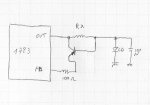D
Deleted member 8382
Guest
I've talked with him via MSN many times and I can do nothing else but tell you that he is a genius with electronics, and that he is telling me about this project since long ago, I hope everyhing works out, GL mate 








